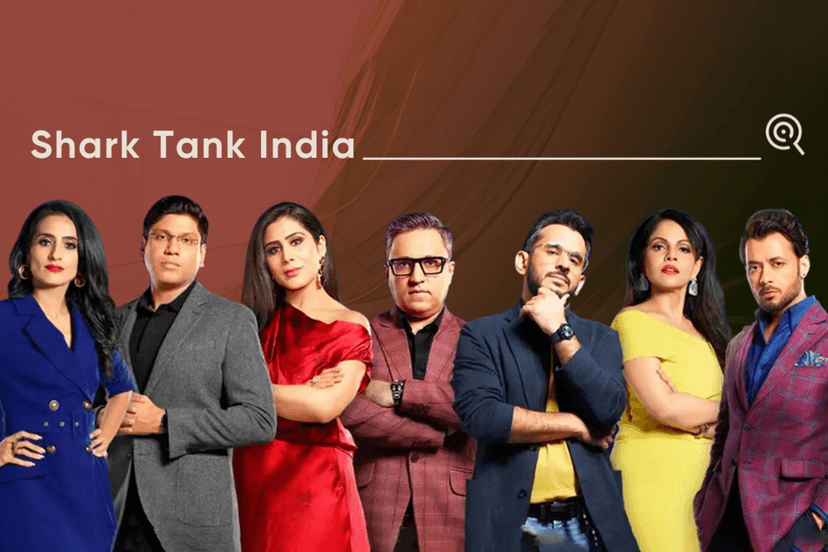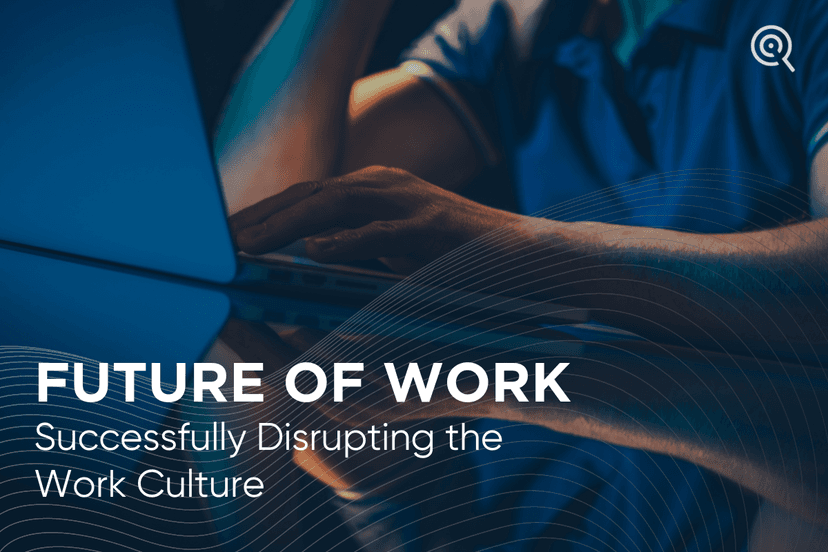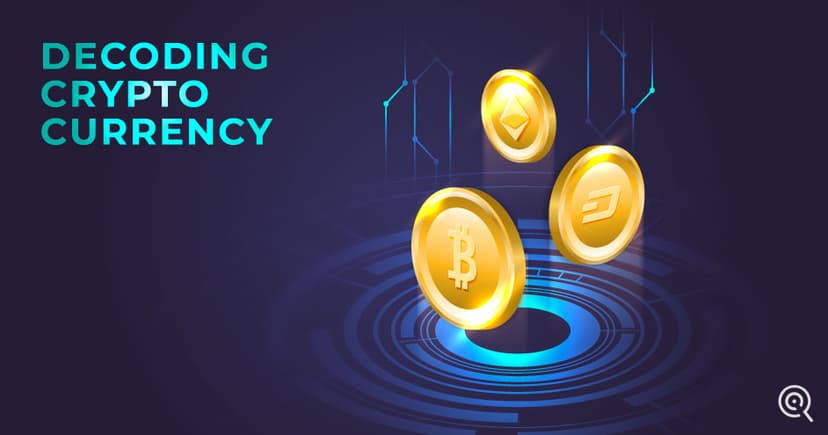Featured Articles
Subscribe to Our Newsletter
Receive exclusive updates and insights directly in your inbox.
Receive exclusive updates and insights directly in your inbox.

<p>Shark Tank India became one of the most talked-about shows in the country with its season debut. Despite being a business reality show, it soon became one engaging show where every member of the family sat together for dinner to watch the show. India’s franchise of America’s Shark Tank abides by entrepreneurs pitching their business to a board of investors to receive funding. The panel of investors includes Ashneer Grover Co-founder of BharatPe, Aman Gupta Co-founder and CMO of boAt, Anupam Mittal Founder and CEO of shaadi.com, and People Group Ghazal Alagh Cofounder and CM of MamaEarth, Namita Thapar Executive Director of Emcure Pharmaceuticals, Peysush Bansal Co-founder and CEO of Lenskart. Vineeta Singh CEO and Co-founder of SUGAR cosmetics. The judges on Shark Tank India, have themselves become viral cultural icons. Dialogues from Namita’s “ye meri expertise nahi hai, I’m out of this” to Ashneer’s “ye sab doglapan hai” have now become the stuff of memes. Out of 62,000 registered start-ups, 198 were chosen for the pitches; Of all the start-ups featured, 15% were technological organizations, with 7% leveraging emerging technologies of AI, ML, IoT, and Robotics. <blockquote> <div id="color-highlight">67 startups bagged funding to the tune of Rs 41.98 crore in the first season, which went on for 30 episodes.</div></blockquote><p> The Sharks had to parley with some startups, while others threw up their hands as soon as they heard the pitch. Then there were the startup ideas that wowed all of the Sharks. All of the Sharks invested in a select few businesses. You may be awed by what these exceptional business concepts are. Let's look at the top startups featured and funded on Shark Tank, with technologies at the crux of their businesses. </p><h2><b>Annie (Tinkerbell Labs) - An iPhone Moment in the field of Braille Literacy</b></h2><p> The flagship product by BITS Pilani graduates, Annie became the world’s first self-learning Braille device for the visually impaired and allows students to study, learn to read, write and type in Braille. Prathamesh Sinha, a cute 10-year-old kid from Pune, gave the demo to the sharks. He won the hearts of the sharks with his ultra intelligence and answers. The best part was when he said, “I’ll manage”. And the funniest part was the one, when he was asked by one of the sharks if he is a shareholder in Annie, he smartly answered that he is the brand ambassador. This kiddo is a huge fan of Aman Gupta, but after his demonstration, Aman Gupta became his huge fan.<i> The company received a deal of 1.05 crore at 3 percent equity from Namita Thapar, Anupam Mittal, and Peyush Bansal.</i> </p><h2><b>Booz Scooters - App-based Scooter</b></h2><p> Founded by Rutvij Dasadia, South Asia’s first-of-its-kind app-based scooter service, Booz, offers electric scooter rentals in various locations, including corporate parks, commercial parks, residential regions, industrial areas, educational campuses, and more. <i>The start-up received ₹40 lakhs in funding for 50% shares by Vineeta Singh & Ashneer Grover. </i> </p><h2><b>An affordable ECG device by Sunfox Spandan (Sunfox Technologies) </b></h2><p> An original and affordably priced ECG device “Sunfox Spandan” scans the heart instantly and is also pocket-sized and easy to carry. One device costs Rs 7,000 and was invented by a Dehradun boy to serve others and save lives. The beautiful presentation with a heart and a song was pitched by Sunfox bagging<i> Rs.1 crore deal for 6 percent equity in the company from five sharks namely Peyush Bansal, Ghazal Alagh, Vineeta Singh, Anupam Mittal, and Namita Thapar, aligning with the cause of saving lives. </i> </p><h2><b>Bagging one of the highest investments - AAS Vidyalaya </b></h2><p> Founded by Vikas and Leena Kakawini’s AAS Vidyalaya, an educational start-up, runs anytime, anywhere schools and aims to teach kids who cannot attend it. Peyush Bansal, Namita Thapar, and Ashneer Grover joined the duo’s vision of making a significant difference in society and closed the deal for<i> ₹1.5 crores for 15% equity.</i> </p><h2><b>The Yarn Bazaar – Yarn Trading App</b></h2><p> The Yarn Bazaar aims to organize the textile industry adjoining, buying, and selling yarn, alongside the company channels interviews and podcasts with industry experts, adding value to the textile industry. Impressing the sharks Peyush Bansal, Ashneer Grover, Anupam Mittal, and Aman Gupta offered Founder and CEO Pratik Gadia a <i>Rs 1 Crore deal for 10% equity.</i> </p><h2><b>Hammer Lifestyle – Smart Audio Product</b></h2><p> Founded by Rohit Nandwani, produces high-quality audio devices, fitness bands, and electric toothbrushes. A budget-friendly brand that is also listed on Flipkart, received funding from Shark Aman Gupta, founder of BoAt, for a heavy share of the company. Aman initially offered to buy the entire company, which amazed everyone, including Sharks Peeyush Bansal, Namita Thapar, Ashneer Grover, and Anupam Mittal. <i>They later closed the deal at 40% equity for Rs 1 crore. </i> </p><h2><b>PNT Solutions - Customized robotics solutions</b></h2><p> PNT works on industrial projects based on AI, ML, ROS, and IoT with customized robotics solutions. The most popular robot ADO is an AI-powered, fully automated humanoid robot that can perform autonomous navigation, facial recognition, and gestures like humans. <i>At Shark Tank, Founder Pratik Tirodkar received ₹25 lakhs investment for 25% equity and ₹25 lakhs debt.</i> </p><h2><b>RoadBounce - Pothole detection software</b></h2><p> With the aim of improving riding quality in India, RoadBounce’s device is a pavement monitoring platform for large road networks that finds and cautions the rider before accidents occur. The device also features geotagged roughness indicators, before-after comparisons, a video interface, and 100 to 200-meter resolution. Impressing the sharks, Ranjeet Deshmukh, the founder received<i> ₹80 lakhs for 20% equity on Shark Tank.</i> </p><h2><b>LOKA - India’s first Metaverse gamified app</b></h2><p> Bangalore-based startup founded by Krishnan Sundararajan tagged as “India’s first Metaverse gamified app”, created for Android and IOS users. LOKA gives a real-time, real-world experience of real cities with the help of third-party apps like Amazon, Netflix, Deliveroo, and more. Locations include Connaught Place in Delhi and will be expanded to Manhattan in New York or Oxford Street in London. LOKA received <i>₹14 lakh for 24% equity from the Sharks.</i> </p><h2><b>Proxgy </b></h2><p> Proxgy, a real-world human avatar launched during the pandemic and founded by Pulkit Ahuja, is a global service for users to book at any given point. Navigating to physical spaces through the avatar, customers can experience a live captivating experience indoors along with the 360-degree rotation cameras on the smart helmets. Along with 3D viewing and broadcasting services for their tech stack. It received whopping funding of <i>₹1 crore for 10% equity from the Sharks.</i> </p><h2><strong>A few more milestone businesses that won the hearts of Sharks include :</strong></h2><img class="alignnone wp-image-1636 size-full" src="https://admin.purplequarter.com/storage/posts/67fdd813eea40-Shark-Tank-India-1.jpeg" alt="Image" width="942" height="495"><p> On the Finale of the Shark Tank season one, Peyush Bansal, Founder, LensKart, himself pitched his business idea in front of other Sharks, recreating his investor pitch in 2010. Fellow Sharks had some hilarious reactions towards Bansal’s pitch; Vineeta Singh commented on Lenkart’s logo calling it ‘very basic’. Ashneer Grover known for his brutal feedback, said, “Aap humari aakho mei dhool jhok rahe ho Kuch” (To cheat or to pull wool over someone’s eyes) With the top tech start-ups providing solutions for the major concerns in India with the help of AI and Robotics, funding and investment for such companies is a major step towards Digital India. With lots of business ideas, pitchings from start-ups, and massive noise received on season one, the reality show’s season 2 has already been announced. </p><h3><strong>Authored by Pratheek. V</strong></h3></p>
Read More
<p>Change is the only constant! The world as we knew it has changed since the onset of the pandemic. In the case of a business ecosystem, what began as work from home as an alternative to shutting down office spaces has led to drastic permanent changes today. Recently, Meesho, a Bangalore-based e-commerce online platform provider for small businesses has taken the industry by a storm with its “boundaryless work” policy. Owing to the altering workplace cultures, the management has declared a permanent work from anywhere option to its employees, the employees can now opt for work from home, remote working or even avail paid workcation benefits offered to them. The management team of Meesho further went on to state that they were paying heed to the psychological and physical safety of their employees rather than pegg on physical space for operation. In and out of the pandemic, companies of various calibers, backgrounds and sectors have brought about necessary changes to better support the humane aspect of the business. While global brands like Google, Dropbox, Quora and Ford among others have successfully adopted a hybrid working model of workplace culture; where 60-70% of the staff prefer to continue working from home post-pandemic, these companies have decided to go remote or opt for a combination of the two. Latching on to the hybrid work culture where technologies such as Zoom, Slack got a head-first push, now even Metaverse is stepping in by replicating real-life work meetings in virtual worlds. Among this discussion, there spurt another popular concept of a 4-days a week work schedule. Atom Bank, UK’s first app-based bank moved its 430+ staff to a 4-day per week model with no reduction in pay. Buffer, a streamlined social media management platform on the other hand experimented and made its 4-day workweek permanent for its employees. <img class="alignnone wp-image-1628 size-full" src="https://admin.purplequarter.com/storage/posts/67fdd819ad300-Future-of-work-2-3-2.png" alt="Image" width="942" height="495"> Among this discussion, there spurt another popular concept of a 4-day weekly work schedule. Atom Bank, UK’s first app-based bank moved its 430+ staff to a 4-day per week model with no reduction in pay. Buffer, a streamlined social media management platform on the other hand experimented and made its 4-day workweek permanent for its employees. Not just companies but governments too have been trying their hands on the same concept. Belgium just announced a four-day workweek as a full-time model. The government took this step keeping in mind the well-being of its citizens. Spain had proposed a 32-hour workweek trial for three years with no pay cut in the compensation. Governments of Scotland, Japan among other world economies have also proposed the same. These alterations in the work schedule have led to better work-life balance among the employees. The shorter workweek has popularly received a lot of success and positive outcomes. <div id="color-highlight">Among the changing work culture landscape with remote and hybrid cultures gaining popularity, the weekly salary payout has been a topic of constant debate. Industry experts are analyzing these management decisions through various lenses.</div><p> Adding another trope to the future of work is weekly payouts. India’s largest online B2B marketplace for buyers and suppliers, IndiaMART recently announced its “weekly salary payouts” leading to a debate among industry experts. While some believe in its goodness others are concerned about its various implications. IndiaMART possibly is India’s first company to take this decision. The work ecosystem is gradually rooting in diverse ways. As work and personal lives closely intertwine, the emphasis lies in finding a balance between the two. In keeping with the sentiments, employers are being sensitive to the employee’s requirements, especially parents. New-age companies in addition to large conglomerates like IBM, EY and Standard Chartered are providing daycare facilities for employees with children so that they are able to manage better. Be it hybrid working styles, reduced workdays, salary policies; novel ways of defining work culture have started. Increasingly more organisations are stepping out of their comfort zones to make decisions that would otherwise have not been taken into consideration. Soon enough we will witness more rewrites to pre-existing corporate norms. </p><h3><strong>Authored by Richa</strong></h3></p>
Read More
<p>Cryptocurrency has been in the news lately as to how it must be regulated. At its core, Cryptocurrency is mostly the decentralized currencies (or tokens) anticipated being used in the digital space, which is based on blockchain technology. Stephen Colbert puts it as – “It is gold for nerds.” Another analogy is made to casino chips – you need to exchange them for real currency. <h2><strong>How does Cryptocurrency work and what are they worth?</strong></h2><p>Highly encrypted, decentralized, and digital. Cryptocurrencies circulate without the central authority that manages them, like the government or banks. Cryptocurrencies can be traded to buy everyday goods and services, though they are often preferred for investment assets like stocks and real estate. They also form a significant chunk of some decentralized financial structures, where digital tokens are an essential tool for carrying out transactions. </p><p>According to Coinmarketcap, a market research website, there are more than 17,000 cryptocurrencies in circulation and traded publicly. Ethereum, Dogecoin, and Bitcoin are the most familiar and accepted versions of cryptocurrencies. In 2008, Satoshi Nakamoto invented and wrote a paper on “Bitcoin: A Peer-to-Peer Electronic Cash System” where he described it as “An electronic payment system based on cryptographic proof instead of trust.” All the cryptographic proof is received in the form of transactions that are documented and filed on a Blockchain. </p><h2><strong>Cryptocurrency Relies on Blockchain Technology </strong></h2><p>Cryptocurrencies like Bitcoin and Ethereum are powered by Blockchain technology. Blockchain is a distributed ledger technology (DLT) that records the provenance of digital assets immutable and translucent with the use of decentralized and cryptographic rehash. Buchi Okoro, CEO, and Co-founder of the African cryptocurrency exchange Quidax says, “Imagine a book where you write down everything, you spend money on each day. Every book resembles a block, and the whole book, a group of pages, is a blockchain.”</p><p>Everyone who uses a cryptocurrency will have their own copy of this book to design an undivided transaction record. The software divides every new transaction as it transpires, and each copy of the blockchain is entered with advanced data, maintaining all the records indistinguishable and authentic. To avoid any kind of fraud, every transaction is audited using two different validation techniques: Proof of Work or Proof of stake.</p><h2><b><img class="alignnone wp-image-1612 size-full" src="https://admin.purplequarter.com/storage/posts/67fdd81dca426-Blockchain-1.jpeg" alt="Image" width="942" height="495"></b></h2><h2><b>The Role of Consensus in Crypto</b></h2><p>Cryptocurrencies commonly use one of the two mechanics to create a system of trust and regulate which transactions are valid and added to the blockchain.</p><h2><b>Proof of Work</b></h2><p>Proof of Work is a process of authenticating transactions on a blockchain in which an algorithm provides high-powered math equations that computers race to solve. Every computer participating is a “miner,” that helps in verifying a group of transactions – which is referred to as a “block” which in turn adds to the blockchain ledger. The very first company to do so will be rewarded with some cryptocurrency for its efforts. The chase to solve blockchain puzzles will require an intense amount of computers and electricity.</p><h2><b>Proof of Stake</b></h2><p>To minimize the amount of power required to validate transactions, some of the cryptocurrencies use proof of stake verification methods. The number of transactions each person can verify is defined by the extent of cryptocurrency; they are willing to “stake,” or bolt up in a time being communal, safe, for the opportunity to enroll in the process. “It’s similar to a bank endorsement,” says Okoro. Proof of stake eliminates energy-demanding equations. Solving it’s more efficient than proof of work, indulgent for quicker verification/validation times for transactions.</p><h2><strong><img class="alignnone wp-image-1614 size-full" src="https://admin.purplequarter.com/storage/posts/67fdd820a4432-VS.jpeg" alt="Image" width="942" height="495"></strong></h2><h2><strong>Mining and Use of Cryptocurrency </strong></h2><p>Crypto Mining is the way to upload or release new units of cryptocurrency into the market. The average consumer was able to do this, but at present, it’s become really expensive. There are so many people who have advanced their equipment and technology to outcompete. And proof of work cryptocurrencies requires ample amounts of power to mine. It is estimated that 0.21% of the entire world’s electricity is used in powering Bitcoin farms. That’s roughly the exact amount of electricity Switzerland uses in a year! </p><p>Cryptocurrencies can be used to make everyday purchases, but they don’t have mainstream acceptance yet. A handful of online retailers like overstoke.com accept Bitcoin, but it’s far from the norm. Using crypto to securely make purchases depends on the purchase to be made. If you want to use it at a retailer that does not accept it directly, cryptocurrency debit cards can be used like Bitpay in the U.S. </p><p>If you are going to pay a person or a retailer, who accepts cryptocurrency, a cryptocurrency wallet is a must. You can also scan the QR code or enter the phone number or wallet address manually. But the transactions are not instantaneous, as they must be verified using proof of work or proof of stake. It takes between 10 minutes and two hours, depending on the type of cryptocurrency. And this time taken to complete the traction is what makes it secure. </p><h2><strong><img class="alignnone wp-image-1613 size-full" src="https://admin.purplequarter.com/storage/posts/67fdd82338df5-Mining-Crypto.jpeg" alt="Image" width="942" height="495"></strong></h2><h2><strong>Investing in Cryptocurrency</strong></h2><p>Cryptocurrencies can be bought on cryptocurrency exchanges and peer-to-peer networks, similar to Coinbase and Bitfinex. Even on smaller crypto purchases, the exchanges charge prohibitively high prices. Coinbase charges a fee of 0.5% of the purchase and also a flat fee of $0.99 to $2.99 depending on the type of crypto used. Brokerage platforms like Robinhood and Webull allow you to invest in crypto. The most famous cryptocurrencies including Bitcoin, Ethereum, and Dogecoin can be traded on these platforms. </p><p>Buying Cryptocurrencies is almost like buying individual stocks. To explore the world of the crypto market, you need to invest in individual stocks of the crypto companies. Investing in big companies that are adopting blockchain technology, like IBM, Bank of America, and Microsoft will involve less risk. </p><h2><strong>Should You Invest in Cryptocurrency? </strong></h2><p>Business tycoons are giving their valuable inputs and opinions on cryptocurrency. Mukesh Ambani, Chairman, and Managing Director, Reliance Industries said at International Financial Service Centers Authority (IFSCA) that he believes in Blockchain Technology and it will redefine the world of Finance. </p><div id="color-highlight"> <blockquote><p>The Chairman of Infosys Nandan Nilekani, said, “If we have a very well regulated and legal, lawful crypto market, not as a currency but as an asset, and a lot of youth building innovative applications could create a wave of global companies.”</p></blockquote> </div><p>Founder and CEO of Paytm Vijay Shekhar Sharma confirmed that the digital payment platforms will endeavour into cryptocurrency once India legalizes.</p><p>About 20 million Indians have taken a dive onto the crypto bandwagon in 2021. Currently, Indians hold crypto assets worth $5.3 billion. The biggest Indian crypto-broking platform, CoinSwitch Kuber, catalogued a 3,500% rise in the transaction dimension and swayed 15 million users, recently becoming one of the unicorns with a $1.9 billion valuation.</p><p>WazirX, Indian leading crypto exchange, validated a record trading of over $43 billion in 2021, so far the highest in India – a growth of 1,735% from 2020.</p><p>Because crypto is a highly analytical investment with the dormant for intense price swings. Certified Financial Planner, Ian Harvey talks to investors about the proportion of their briefcase they’re willing to lose if the investment goes south. It may be 1% to 5%; it could be 10%, he says. It depends on how much they have now and what’s really at stake for them, from a loss perspective.</p><h2><b>Budget 2022 and Cryptocurrency </b></h2><div id="color-highlight"> <blockquote><p>Indian Finance Minister Nirmala Sitharaman announced in the annual budget presentation to parliament on February 1, 2022, “Any income from the transfer of virtual digital assets would be a 30 percent tax – in the effect of capital gains tax.” The custom will also be applicable to Non-Fungible Tokens (NFTs) in addition to crypto exchanges.</p></blockquote> </div><p>Further elaborating on the taxation model for such digital currencies, the budgetary speech outlined that there has been a phenomenal increase in transactions in virtual digital assets. The magnitude and frequency of these transactions have made it imperative to regulate them and place them under a tax regime. All crypto transfers above a certain monetary value will be liable for a 1% TDS deduction, which will in turn help authorities keep track of the movement of such currencies in the economy.</p><p>“India is finally on the path of legitimizing the crypto sector in India,” affirmed Nischal Shetty, Co-founder, and CEO of WazirX, India’s largest crypto exchange.</p><p>Cryptocurrency in India is a major concept. Since the pandemic struck the country and left the economy to tumble, more Indians have shown interest in cryptocurrency investment with the hope of bringing in good benefits. After the announcement of a tax on digital assets in the Union budget 2022, there has been a lot of buzz among the investors.</p><p>Cryptocurrencies and Cryptography are powerful, society-shaping technologies and we’re just beginning to understand their reach and influence. In the upcoming article, we will further discuss the crypto ecosystem by delving into cryptographic trust, how crypto investors and experts are reacting to the current tax implications, and more.</p><h3><strong>Authored by Pratheek. V</strong></h3></p>
Read More
<h2><b>What is ESOP?</b><p style="text-align: left;"><a href="https://www.purplequarter.com/esop-perspective-and-trends-in-indian-startup-ecosystem/all-about-tech/">Employee Stock Option</a> Plans ‘ESOPs’ entitle employees the right to purchase or benefit or subscribe for the shares of the company at the predetermined price for a future date. Under ESOPs, employees either <a href="https://www.purplequarter.com/esop-buyback/all-about-tech/">buy</a> stocks of their company at below market value rates or are provided stocks in lieu of remuneration upto a specific percentage. ESOPs are allocated in a phased manner, especially post a funding round. There is no limit on the quantum of ESOPs to be issued to the employees.</p><h2><b><img class="alignnone wp-image-1604 size-full" src="https://admin.purplequarter.com/storage/posts/67fdd82cd1a2c-6.jpeg" alt="Image" width="942" height="495"></b></h2><h2><b>Why are ESOPs given?</b></h2><p> ESOPs are a motivator and possible source of wealth for employees. It helps build employee trust by making them a part of the company’s growth journey. As new-age companies leap into the next trajectory of their growth journey, sustainable performance becomes highly dependent on the hard work, dedication and commitment of their employees. Therefore, in order to engage and motivate their employees to continuously create value, they reward them appropriately through sharing the benefits of value so created and enjoy the benefits of phenomenal growth that the companies foresee in the coming years. Along with salary, nowadays companies are also providing ESOPs that could be considered as extra monetary rewards for the employees. Companies that provide ESOPs have long-term goals in mind. Companies not only want to keep their employees for the long term, but they also want to turn them into shareholders. ESOPs help employees in their personal wealth creation. </p><h2><b><img class="alignnone wp-image-1606 size-full" src="https://admin.purplequarter.com/storage/posts/67fdd82f1c119-5-updated-4.png" alt="Image" width="943" height="496"></b></h2><h2><b>What are the tax implications of ESOPs?</b></h2><h3><strong>For the employers (issuer of ESOPs)</strong></h3><p> Companies have no tax liability, it has to book Compensation Cost in its P&L Account </p><h3><strong>For the employees (recipient of ESOPs):</strong></h3><b>While exercising:</b><p> Taxed as perquisite; the difference between the Fair Market Value (FMV) on the day of exercise and the exercise price is taxed as a perquisite in the hands of the employee when he/she exercises the option. This perquisite forms the part of total income from salary, TDS is applicable based on the salary bands. <b>While selling:</b> Taxed as Capital Gains. After allotment and purchasing shares, if an employee decides to sell the shares, he/she shall be subject to Capital Gains tax if he sold these shares for more than FMV on the exercise date. Capital gains would be taxed based on how long they were held which is from the date of exercise to the date of sale. </p><h3><b>Restructuring Modes Under ESOP</b><b></b></h3><ul> <li> <h4><b>Employee Stock Ownership Plan (ESOP)</b></h4> </li> </ul><p> Offered by a company to its employees to take equity shares of the company at a discounted price.<b></b> </p><ul> <li> <h4><b>Employee Stock Purchase Plan (ESPP)</b></h4> </li> </ul><p> Allows employees to purchase company’s shares, often at a discount from Fair Market Value.<b></b> </p><ul> <li> <h4><b>Restricted Stock Units (RSU)</b></h4> </li> </ul><p> The employee is awarded the shares subject to fulfilment of certain underlying conditions<b></b> </p><ul> <li> <h4><b>Stock Appreciation Rights (SAR)</b></h4> </li> </ul><p> Stock Appreciation Rights -Cash Settled (SAR-Cash Settled), Stock Appreciation Rights - Equity Settled (SAR - Equity Settled) In the case of SARs, an employee gets the benefit in the form of cash/equity which is the difference between the date of grant and final exercise of options. <em>Further details on ESOP will continue.</em></p></h2>
Read More
<p>The digital transition will accelerate in 2022. Cutting-edge technology trends are enabling businesses to move faster; these will push the method and delivery of services. Here’s looking at the digital transformation trends that will drive significant changes globally and possibly reshape business platforms to newer heights. <h2><b>More Investments in AI and ML, increased the demand for AI Engineers </b></h2><p> When it comes to data analytics, three main factors make ML and AI great force multipliers: the speed with which AI can process vast amounts of complex data, the way ML can automate many of the tasks involved in the process; and the fact that AI and ML improve with each iteration. The fintech sector and health sector are expected to overtly run on AI adoption. <b>Generative AI </b>can be used in a variety of tasks, including developing software code, assisting with drug development, and target marketing. Gartner predicts generative AI will account for 10% of all data produced by 2025, up from less than 1% currently. The demand for AI engineers grows when the technology gets advanced. AI engineering is a discipline focusing on the governance and life-cycle management of a wide range of operationalized AI and decision models, such as machine learning and knowledge graphs, as the use of AI grows. </p><h2><b>Healthtech and Edtech to drive on 5G Connectivity</b></h2><p> While 5G installations in the sub-6GHz bands have been on schedule the world over, more complicated 5G millimeter wave deployments have a lot of room for expansion. 5G is much more than just higher download, upload, and streaming speeds; its diverse use will be a reality and pull up other technologies. 5G also has low latency that allows for dense deployments and generally improves cellular technology. Incorporating the Internet of Things (IoT) and cloud-based systems into your workflow will be easier and less expensive. To offer the finest client experiences, industries such as manufacturing, healthtech, edtech, telecom, entertainment, and transportation will base operations around 5G-tech and connectivity. <b></b> </p><h2><b><img class="alignnone wp-image-1580 size-full" src="https://admin.purplequarter.com/storage/posts/67fdd83c03908-Blog-Cover-hyperautomation-1.jpeg" alt="Image" width="800" height="419"></b></h2><h2><b>Enhanced agility in decision-making with Hyperautomation </b></h2><p> Hyperautomation will boost productivity, accelerate time to market, and enhance employee and customer satisfaction. In 2022, hyper-automation will combine technologies such as Robotic Process Automation (RPA), Artificial Intelligence (AI), and Machine Learning (ML) to process data in more impactful ways, enhancing the quality and overall productivity. It will also provide real-time, continuous intelligence, as well as increased analytics, to improve operations and procedures even more. According to Gartner, the majority of hyper-automation programs currently undertaken will be mature by 2024. Organizations will be able to cut operating costs by a healthy 30% with hyper-automation and process re-design. </p><h3><strong>Authored by Pratheek. V</strong></h3></p>
Read More
<p>In the recent inauguration of the Bengaluru Tech Summit, Mr. Narendra Modi said that our governance model is Tech-First. The tech adoption rate has been the highest during the pandemic, forcing people to forgo usual tasks and work online. This phase has been called “the quickening” where a decade’s worth of tech adoption happened in 6 months. With sectors such as education, retail, and finance going online, it’s been a great boost for the country with respect to technology. According to Narendra Modi, India is at a very advantageous stage where we can create technology solutions in India that can then be deployed throughout the world. India has good technologists with the ability to find solutions. One of the most beneficial of these advancements was farmers and families in rural areas, who were able to order necessities at the click of a button. With the mitigation of compliance with regard to the IT sector, it will be easier for India to deploy its solutions to different parts of the world. The theme of the tech summit is “Next is now”. Modi said that it was only fitting that technology was aiding with the organizing of this event. During the inauguration, the PM also spoke about the importance of technology in the Indian government, the benefits it has yielded for everyone, and how Indian technologists will keep yielding benefits for themselves and everyone related to them. Technology has already become a huge part of our day-to-day life and it will only make life easier for us. Improved technology requires the best minds to come together and find solutions. And thereby calling for the fortification of tech teams. Without great tech leaders with visions, there is no scope for improvement. This means every company will look for tech leaders as CTOs will be indispensable for an organization to thrive.</p>
Read More